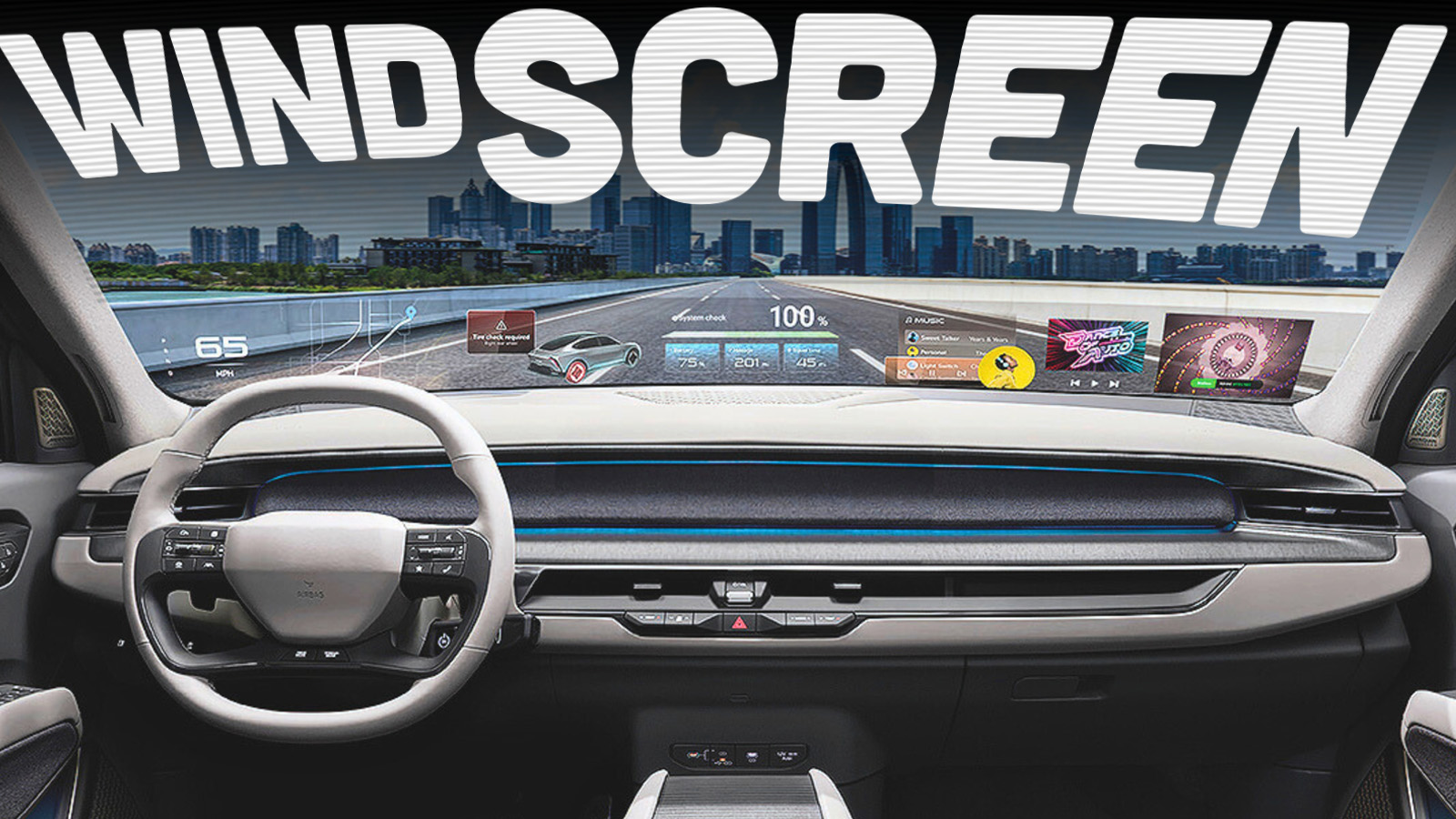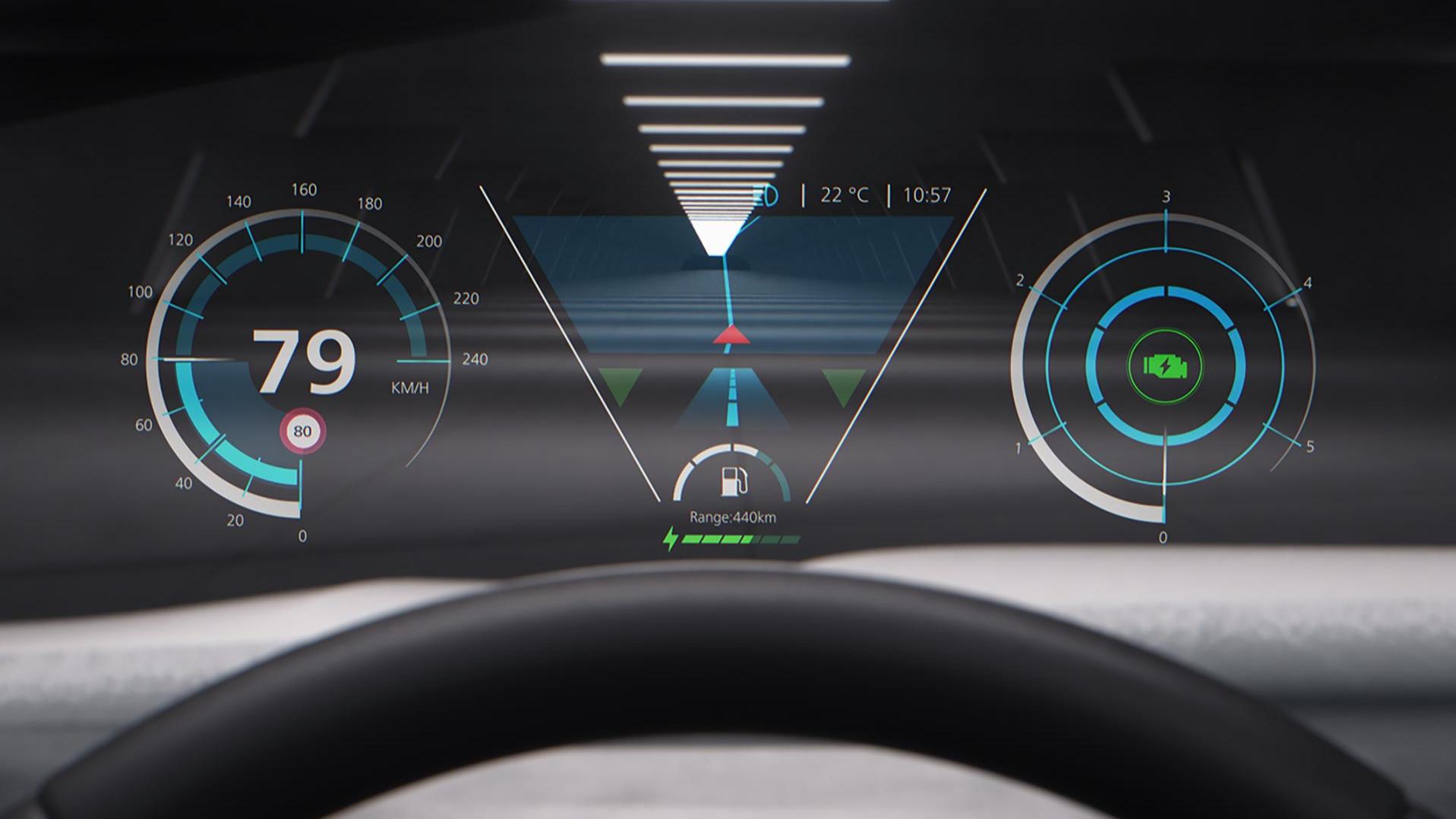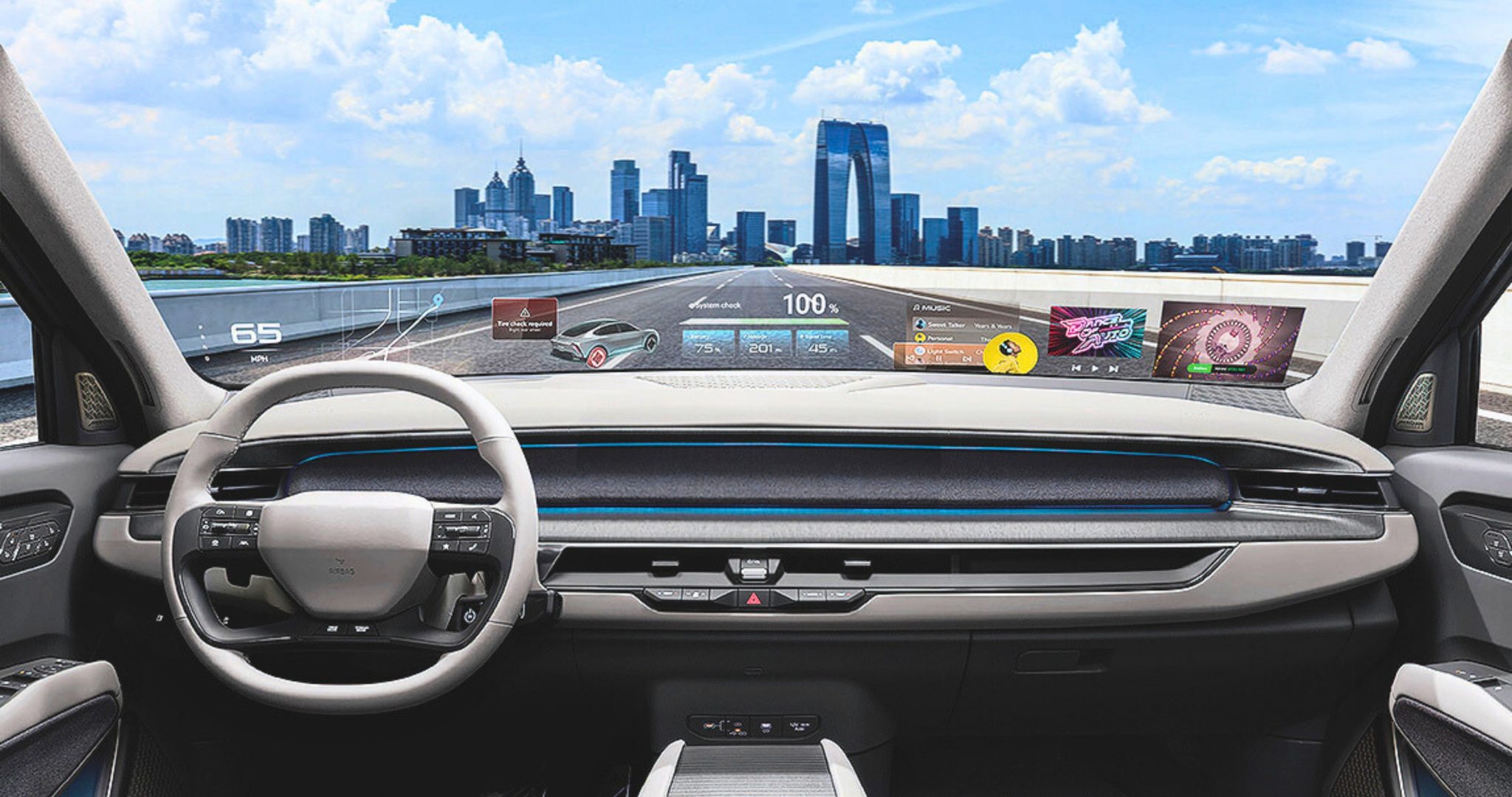
Heads-up displays were hot technology in the 80s, and they’re still popular on premium vehicles today. They let you use a teeny little section of the windshield to display your speed or other pertinent data. But what if you could do that over the whole windshield?
As reported by Automotive News, Hyundai is pursuing just that. Or more specifically, the subsidiary known as Hyundai Mobis, along with Zeiss—the optics company you’ve probably heard of from the camera world.
The goal? Turn an entire windshield into a full-width display. Because, hey. Even the biggest infotainment screen just isn’t big enough.

If you’ve got a whole windscreen to play with, who needs an instrument cluster?
Upgrade To A Big Screen
If you’ve ever looked at conventional heads-up display technology, it only really works on a small scale. The simplest versions are basically just using a small display mounted on the dash which is reflected to you via the windshield, giving you a few square inches of real estate at best. That concept obviously isn’t practical to create a full-windshield display.
The breakthrough that enables this larger-scale concept to work lies in a special thin film developed by Zeiss, and a projector system developed by Hyundai Mobis. The official press materials don’t explain the exact physics involved, but the special thin transparent film applied to the windshield allows it to act as a holographic display. Powerful projectors located in the dash would then create the image on the display for the driver—with two or three very bright units likely to be used to provide enough light for the system to work in full sun.
The system acts as a transparent display that can overlay imagery over the light coming in from outside. There’s no need to use cameras to capture an outside view for display on the screen—outside light can pass straight through to the cabin. The idea is that this could be used to display driving data and infotainment content. Presumably, it could even deliver entertainment content when safe to do so. The press release notes that video shown on the passenger side of the vehicle isn’t visible to the driver, which is important to avoid distraction.

While the specific science remains a trade secret between Zeiss and Hyundai, the companies are open about the potential way this could change the automotive interior experience. Since the windshield provides so much display space, there’s no need for separate infotainment screen and dash cluster. Instead, everything is just displayed on the windshield instead. The idea is that this would have safety benefits, allowing the driver to keep their eyes on the road at all times.
You won’t see this technology in cars for a little bit, but apparently it’s not far away. Mass production could begin as early as 2027, according to a Hyundai Mobis executive that spoke to Automotive News.

Zeiss and Hyundai Mobis have signed an agreement to work on the technology together.
The one thing that concerns us about this technology? There are precious few buttons seen in the demo image from the press release. Touching the windshield is impractical, so you’ll probably be stuck relying on voice controls. Wouldn’t that be a new unique kind of hell?
Images: Hyundai, Hyundai Mobis
TrendForce 2024 Global Automotive LED Market- Lighting and Display Product Trend
Release Date:
1. PDF (180 Pages)- 30 June 2024
2. EXCEL- 30 June 2024 and 31 December 2024
Languages: Traditional Chinese / English
|
If you would like to know more details , please contact:
|















